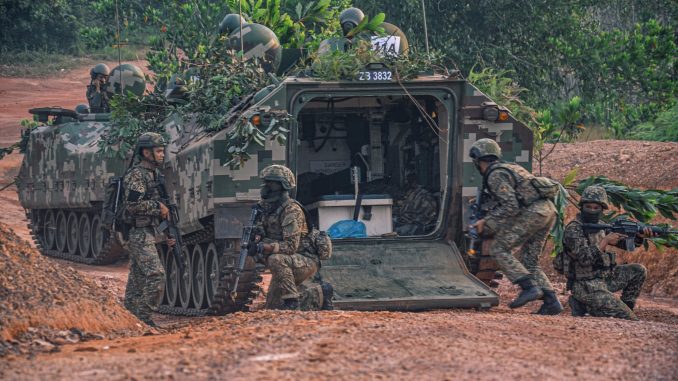
SHAH ALAM: Back in 2021, Malaysian Defence reported on the Para Armour Squadron getting seven MIFVs K200 from the 4th Mechanised Brigade’s 4 Kompeni Kor Polis Tentera Darat. The K200s are armed with the 12.7mm gun hence its designation in the Army as MIFV K200 A1 12.7mm.
The Armour Squadron early this month conducted an exercise at the Asahan firing range which is now part of the large firing range of Kem Sirajuddin in Gemas, Negri Sembilan. The squadron operate out of the camp, likely the only unit in 10th Para Brigade when it was formed, which is not based at Kem Terendak in Malacca.
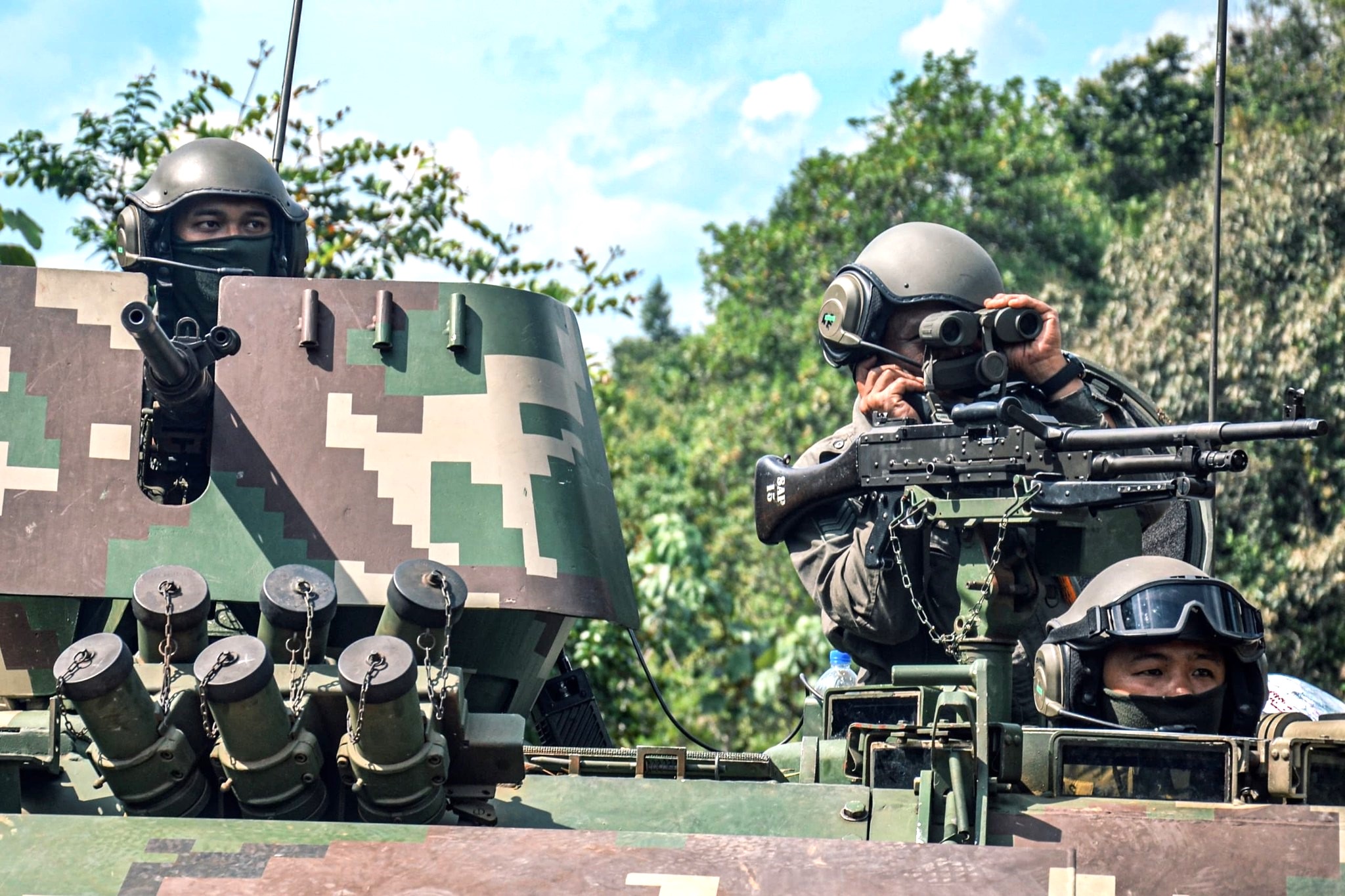
Anyhow I believed this is the first major exercise carried out by the squadron since it got the MIFVs back in 2021 (which is publicised). The transfer of the MIFVs marked the phasing out of the Scorpion light tank and Stormer IFV which the squadron used to operate previously. The unit is also equipped with at least two Adnan ambulances together with the Scorpion and Stormers and now with the MIFV.
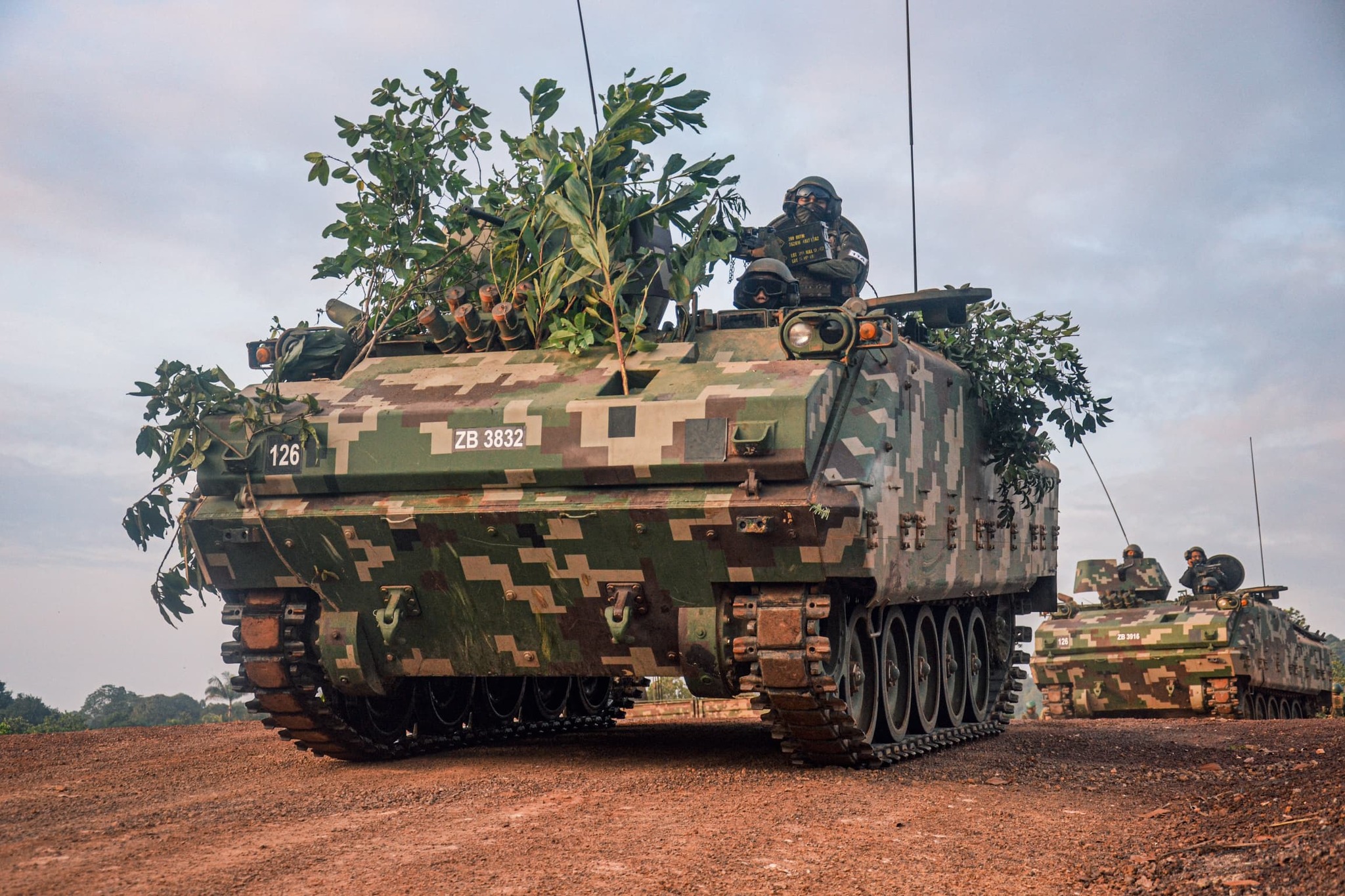
The post by 10th Para Brigade:
E𝐊𝐒 𝐈𝐑𝐎𝐍 𝐓𝐇𝐔𝐍𝐃𝐄𝐑 𝐒𝐢𝐫𝐢 𝟏/𝟐𝟎𝟐𝟒 𝐌𝐄𝐍𝐆𝐔𝐉𝐈 𝐓𝐀𝐇𝐀𝐏 𝐊𝐎𝐌𝐏𝐄𝐓𝐄𝐍𝐒𝐈 𝐊𝐑𝐄𝐖 𝐃𝐀𝐍 𝐀𝐍𝐆𝐆𝐎𝐓𝐀 𝐓𝐄𝐑𝐔𝐏 𝐒𝐄𝐑𝐀𝐍𝐆 𝐒𝐊𝐔𝐀𝐃𝐑𝐎𝐍 𝐀𝐑𝐌𝐎𝐑 (𝐏𝐀𝐑𝐀)
GEMAS : Skuadron Armor (Para) telah melaksanakan latihan Eks IRON THUNDER Siri 1/2024 di Kawasan Lapang Sasar Asahan mulai 5 hingga 9 Februari 2024.
Tujuan eks dilaksanakan adalah untuk memastikan tahap kesiagaan dan keupayaan bagi anggota Skuadron Armor (Para) sentiasa berada di tahap yang tertinggi pada sebilang masa dan dapat meningkatkan serta mempraktikkan ilmu yang telah dipelajari mengikut TTP yang telah digariskan.
Eks ini telah dipecahkan kepada beberapa fasa, antaranya adalah aturgerak Leading Parachute Battle Group (LPBG), aturgerak Tactical Air Landing Operation (TALO), menguasai dan mempertahankan lokasi pentinh, melaksanakan Link up, Battle Hand Over (BHO), Ulang Bekal dan TTP di serang hendap yang menggunakan konsep Combined Armed Live Firing Exercise (CALFEX) bersama Leading Para Battle Group (LPBG).
MK 10 Briged (PARA)

It is interesting to note that soldiers from 10th Para Brigade are also issued with headsets though it is unclear why not all of them are issued with it. See the post below:
Kita perlukan lebih ramai pengasuh lapang sasar. Satu profesion yang sangat hebat. pic.twitter.com/4OxT7t9OaA
— Pokley. (@haiyakasim) February 19, 2024

— Malaysian Defence
If you like this post, buy me an espresso. Paypal Payment

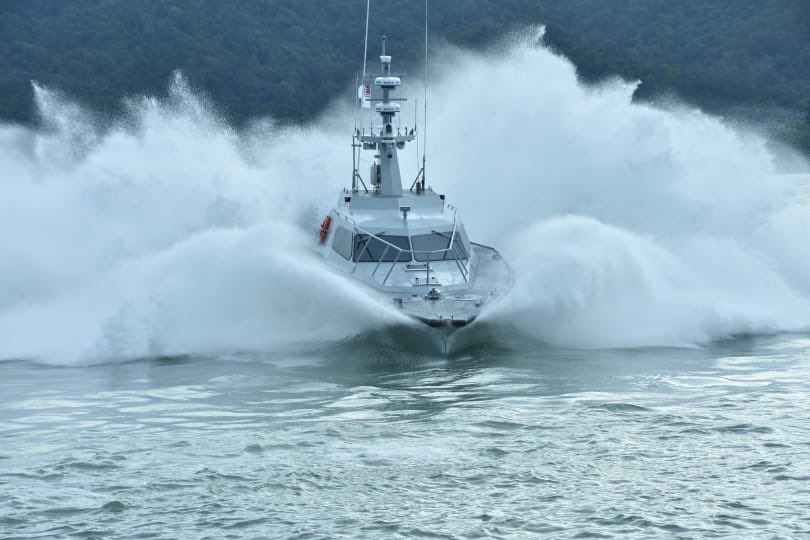
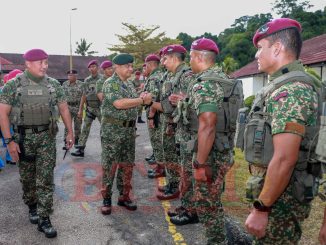
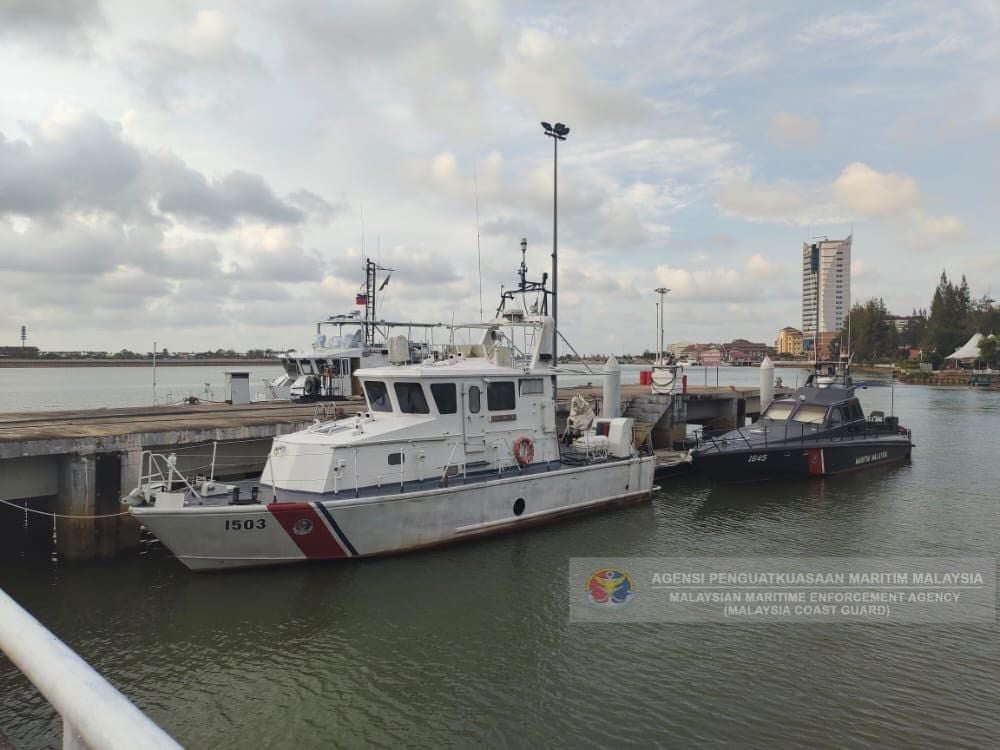
Prior to this exercise, they have done 3-4 exercises using MIFV in 2022-2023.
Current vehicles in their inventory
MIFV
ZB 3916
ZB 3928
ZB 3815
ZB 3832
ZB 3830
ZA 9964
ZB 3929
MIFV Fitter
ZA 9996
Adnan Ambulance
??
??
Are Para still interested on having IFV or light tank?
I know weight is an important factor but aren’t these a bit undergunned. Perhaps the Adnan 25mm might be better?
Yup but there is no Adnan hulls to be transferred.
Yes but the lack of money is in the way.
Money will always be a problem but still won’t consider used equipment for example the american Strykers.
Sounds like a good idea but buying around 10 Styrkers is not a good idea.
If wanna get used, i would go for additional KIFVs. To create a 4th MIFV/ADNAN tracked mechanized infantry battalion (as a replacement of 19RAMD now going to Sabah)
4x MIFV/ADNAN tracked mechanized infantry battalion (all in Semenanjung)
7 RRD Mek
12 RAMD Mek
14 RAMD Mek
?? ???? Mek
2x Gempita wheeled mechanized infantry battalion
19 RAMD Mek Sabah
?? ???? Mek Sarawak
I would get around 180 KIFVs (including reserve attrition units), try getting it for free as offsets of korean arms buy (say FA-50 Batch 2)
Around 160 AV8 Gempita for USD 500 million (including additional units for KAD Cavalry regiments)
If we want to buy used armour. I prefer we buy those Australian ASLAV
Last time the scorpion 90mm and the stormer with 20mm orlinkon were on paper better armed compared to the MIFV 50 cal
Maybe the para should have not retired this yet but its water under the bridge already
The discussion seems to be what can be done on paper. Missing in the narrative are the pertinent questions of why an airborne unit would need IFVs and in the event of the unit being rapidly moved by air; inherent issues with moving the IFVs… As it stands even moving a single battalion; plus its supporting arty and keeping it resupplied is a major drain on resources [not all the needed transports will be available or operational when needed]. Adding IFVs to the mix somewhat complicates things.
No doubt some airborne units have long had IFVs but their requirements/CONOPs differ greatly to 10 Para’s. As for getting used KIFVs; yes but IFVs of that generation really lack the protection needed on the modern battlefield. Also, all this talk about follow on AV-8s is moot : no cash. On F/A-50 offsets; it’s signed and sealed. What we could have done on paper and what we’ve actually done are profoundly different things.
“american Strykers.”
“we buy those Australian ASLAV”
Not really a good idea, and even if we want to, its either Swiss Mowags or Canadian LAV3. The Murican & Aussie ones probably had seen combat in Iraq & Afghanistan and might be carrying permanent combat damages ie hull structural fatigue.
The Scorpions and Stormers were unsupportable as the numbers were low which had affected the number of people who can support them. The large number of MIFV in service, meant more people are around to suppport them.
Offsets for FA-50 batch 2 is still open for discussion… I would have KIFV, KIFV K263A1 Vulcan VADS variant and UH-60P Blackhawk (being retired prematurely to support locally made Surions) in the lists for offsets for the FA-50 batch 2.
As for follow on AV8. USD 500 million will get TD around 160 additional AV8s (based on what Oman paid for their PARS order). 100% of the budget will go towards the vehicle itself, as all the ToT etc has been paid for. Still quite a lot of RMK12 2021-2025 budget for tentera darat is still not spent, and this AV8 buy can be fit into RMK12 plan. Just the issue of political will (yes that is complicated i understand)
To have :
>> 80-90 AV8 for a 2nd Wheeled Mech Inf Battalion for Sarawak (which nicely balances the relocation of 19 RAMD from Kedah to Sabah)
>> 70-80 AV8 for KAD Cavalry regiments, enabling all 5 Cavalry regiments to be equipped with a uniform mix of AV8 and HMLTV.
As for para armor sqn…
Those KIFVs will never be airdropped anyway so the parachute currency for its soldiers is irrelevant. Just place it back under 11 KAD, or disband it. KIFV movement with C-130 or A400M does not need their crews to have parachute qualifications. But look towards having a single operational ready “playset” for 10PARA (will be shared with all 4 para inf battalions) with mobility-enablers such as Polaris DAGOR (that could lift a whole section in 1 go) and electric mountain bikes. This will enable 10PARA to be dropped at a standoff distance from the intended objective, hopefully with less air defence and travel from DZ to the objective on vehicles.
https://www.popsci.com/uploads/2021/10/15/20210828army8614011_075.jpeg
https://soldiersystems.net/wp-content/uploads/2016/12/img_8431.jpg
BTW Marhalim, other than Sqn Armor Para, there is another PARA unit that is not based in Kem Terendak. The 18 RAMD PARA based in Kuala Terengganu.
“why an airborne unit would need IFVs”
The more pertinent question; is it still an airborne unit, or rather are the decisionmakers turning 10 Para into something else despite its naming.
UK SAS despite ‘Air’ in its name are specialized in underwater warfare and infiltration & assault missions. US SEAL teams, despite its naval origins, are usually selected for important deep inland strikes such as the hit on Osama. So does an organization name still matter or perhaps importantly what it can do apart from other outfits and if they gotten all the key enablers to perform their job.
More KIFV.
If we have the money I prefer we get more Gempitas. Time to move on from KIFV/Adnan. Even their makers have moved onto creating newer and better protected IFVs.
Yes, 18th RAMD is not based in Terendak
”UK SAS despite ‘Air’’
The SAS has a waterborne component; so does Gerak Khas but the main unit in his Majesty’s Armed Forces when it comes to water ops is the SBS. The SAS and the SBS in fact share the same selection and the SBS can and does do on land what the SAS does but the SAS can’t do all that the SBS does on water.
”The more pertinent question”
As long as it’s called ’10 Para’ and requires every member to be jump qualified and to maintain currency it is a jump qualified or ”para” unit. The whole idea of giving it an armoured component is for fire support and protected mobility but if the unit has to be transported by air; will be problematic as the IFVs will take up space; space needed for a host of other things. 10 Para is still and always was an airborne unit and it fits in line with the “elite” status and the mystic and romanticism associated with being a “para”.
The pertinent question was always how IFVs [ a small number] would fit into the unit’s CONOPs. One thing issuing the likes of a BMD, Fennek or Weasel to a airborne unit; another thing issuing it with a KIFV. Another issue is the danger of the unit being misused: a common occurrence with such units out of sheer necessity. Airborne units are intended for coup de main type ops; not protracted one’s which can undertaken by units which are less resource and time intensive to train. The KIFV and Adnan were great for their time but as it stands we need a better protected and more networked IFV. Just like the notion of getting more PT-91s; getting more KIFVs and Adnans is a regressive move; irrespective of how anyone wants to spin it. If those who advocate getting more PT-91s [a 70’s design with inherent issues and based on Soviet requirements], KIFVs and Adnans had to be in them under fire they’d sing a different tune.
… ”Those KIFVs will never be airdropped”
Who said anything about “those IFVs being airdropped? I made it quite clear unequivocally what I meant. I was referring to how the IFVs add to the unit’s footprint and takes up space which is already needed for various other things.
… – ”with C-130 or A400M does not need their crews to have parachute qualifications.”
If a IFV and it’s crew is part of 10 Para then the crew will have to be jump qualified; as was the case with arty, MP, signals, engineering and other elements.
’10PARA to be dropped at a standoff distance ”
The enemy also has a vote/say and does the unit enough assets to move the bulk of its men? Arnhem is a classic example of units – with limited mobility – being landed too far from the objective; hence the “A Bridge Too Far”
The reality is that the bulk of the unit will still have to leg it and that’s why it’ LZ/DZ can’t be too far from the objective. It isn’t a VDV division whose regiments all have BMDs.
KIFVs. Does the army actually have a need for more KIFVs? Just because you think it’s a brilliant idea didn’t mean the army feels the same way. On the Vulcan. It was retired by most users for a reason. It does have value in the C-UAS role but ideally something with more legs is needed to engage targets at some distance and is why most users have gone for 30mm or in the case of the Russians with their new AD vehicle; 57mm.
… – ”Just the issue of political will ”
And also a whole list of factors that e decision makers have to factor in; various dynamics at play …
… – ”Offsets for FA-50 batch 2 is still open for discussion… ”
Assuming the army wants more KIFVs …
… – ”round 160 AV8 Gempita for USD 500 million (including additional units for KAD Cavalry regiments”
The pertinent question is of 2024 what are the army’s impression of the AV-8? Are there inherent issues it’s not happy with and in a few years time when we – perhaps – might have the cash for a follow batch will the army actually have a need?
Tom Tom – ”aren’t these a bit undergunned.”
If it comes up against another IFV armed with something heavier than a 12.7mm then yes but if it’s only expected to provide troops with mobile protection and not go up against more heavily armed IFVs then no.
Haiqal – ”I prefer we buy those Australian ASLAV”
Please explain why you think a high mileage and wheeled IFV would be a preferred option to a better protected tracked IFV which also has superior mobility?
Haiqal – ”Are Para still interested on having IFV or light tank?”
Unless I’m very mistaken 10 Para was never interested in a light tank. Also note that a wheeled or tracked IFV fitted with direct and indirect fire weapons can replicate some of what a light tank can do.
Better protected, networked, this and that mean a new expensive, highly marked up IFVS like the Gempita….again. So again, no budget. Thus we rather have nothing or just a few like the SPH when we have some budget. Meanwhile the current assets got no budget to refurbish or upgrade. Soon we retire them without replacement. Vicious cycle.
It would not be highly marked up if the government did not allow it do so. Even the current Gempita is fully networked. Unfortunately, the rest of the Army are not.
“armoured component is for fire support and protected mobility”
I hazard a guess, and this is just my speculation, I believe the decisionmakers are attempting to turn 10 Para into a kind of quick reaction assault brigade with its own armoured transports for rapid troop movement & deployment under some limited protection, perhaps why Gempita is not chosen could be due to its weight, and having its own arty component with the LG1 as a rapid deployed indirect fire support closer to the battlefield and faster to setup & dismount in keeping up with rapid troop movements than the more cumbersome 155mm howitzers. I hazard a guess that next it would acquire its own organic battlefield UAV component.
“It would not be highly marked up if the government did not allow it do so”
Localisation & national project cost is never cheap even if the Govt did not allow a huge markup.
I have not heard of complaints of the Gempita, except the grumble that it is a huge vehicle to maneuver in tight spaces (which most new IFV/AFV are of this size or bigger)
As for networking, the technology that is available now (2024) is leaps and bounds better that what is available 10 years ago when the AV8 project started.
Now with Software-defined radios (SDR) supplied up to individual soldier level, networking could simply be an android pad connected to the SDR running encrypted apps.
That means something old like the MIFV could be easily networked to the rest of the army with simple non-permanent hardwares that needs no modification to the vehicle itself.
The other issue with the Gempita is the system, which is not at fault but the lack of training that the Army provides to its soldiers coming into the vehicle. Perhaps it has been solved perhaps not
People-Process-Texhnology…thats the whole system. A system must be developed in phases and properly change managed by a central PMO…cannot be done in a big bang kinda way. Otherwise the user has a tendency to reject the system. Learning curve is very high initially including resistance to change.
Interim or exception process must take care of interface to non computerised system…a pain if the whole integrated system take years to fully mature and bug free.
If 10 Para deploys by road then fine; having IFVs is not a major issue but if it has to deploy by sea and air it is. That’s also the rationale behind a 105mm gun; light and easier to fly or under sling compared to a 155mm gun.
For the rest of the army however a 105mm gun simply does not provide what is needed. Lacks the range and the “bang” which at times is needed. Also, unless one is living under a rock or is totally oblivious to things; a towed gun; especially a 155mm one; brings with it a host of penalties. It’s fine if we’re engaging the Royal Sulu Army as we did in 2013 but if against an army which knows what it’s doing a towed gun won’t survive for long. I’m all for UASs and loitering drones but not to replace artillery and mortars but to complement them.
I fully see the need for a jump qualified unit but we’ve gotten carried away. Like others we’ve fallen for the elitism, mystic and romanticism associated with being a “para”. The brigade has 4 battalions; fine but is still lacks the signals, arty, engineering and logistical assets needed. Even deploying 2 battalions and maintaining them in the field would be a huge challenge for us given the resources we have. The danger is that in the even if a conflict 10 Para might be misused and the decision makers might expect to much from it.
Never mind how expensive and resource intensive is it to raise and maintain jump unites. Every single person has to be jump qualified and to maintain currency: and several jumps a year are needed. Which is why some armies have downsized their para units and focused on helicopter insertion or air landing.
I can see the logic behind to maintain unit jump capability even if they will have elements of armoured transport as it jives with keeping the unit as a rapid reaction force which may need element to parachute into take-&-hold scenarios while the rest of the brigade arrives via land (Ops Market Garden type). Perhaps its why unlike 10 Para other jump units are still purely airborne? Thats my theory anyways.